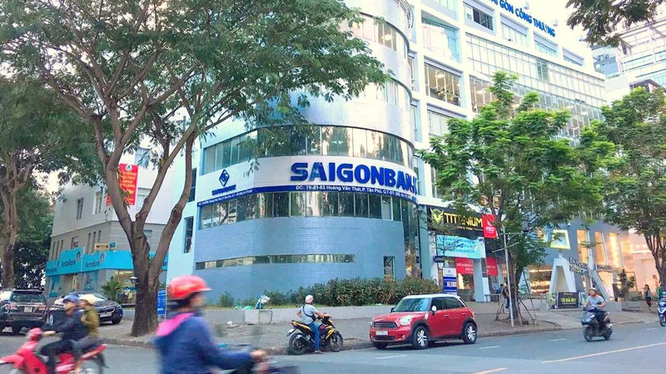While strong cash flow was pumped into the market in the second quarter, Saigonbank's outstanding loans decreased sharply, along with a sharp decline in asset quality.
Provision costs “erode” profits
According to the recently announced financial report for the second quarter of 2025 of Saigon Joint Stock Commercial Bank for Industry and Trade (Saigonbank), there are many negative indicators in both business results and asset quality.
Total operating income in the second quarter was only VND269 billion, a modest increase of 2.3% over the same period. In contrast, operating expenses increased sharply by 7.4% to VND153 billion. As a result, net profit from business activities decreased by 3.7% to VND116 billion.
Notably, the cost of credit risk provision increased by 80% to VND39 billion. This large provision reduced pre-tax profit in the second quarter of 2025 to VND76 billion, 22% lower than the same period last year.

In the income structure, the bank's main source of income is still net interest income, reaching VND233.4 billion, up about 3.5% over the same period. The service sector also recorded a slight increase of 12.8%, reaching VND11 billion. In addition, income from capital contributions and share purchases contributed VND3.7 billion.
In contrast, other activities recorded a clear decline: profit from foreign exchange trading decreased by 6.1%, to more than 4 billion VND; other business activities decreased by 29%, to 16 billion VND.
Despite the decline in the second quarter, in the first six months of the year, Saigonbank still recorded pre-tax profit of VND175 billion, up 5% over the same period in 2024. After-tax profit reached VND140 billion, up 5.6%. With this result, the bank has completed about 58.3% of the 2025 profit plan of VND300 billion.
Asset quality declines
As of June 30, 2025, Saigonbank's total assets reached VND35,141 billion, up 5.7% compared to the beginning of the year. However, outstanding loans to customers decreased by 7.2% to VND20,260 billion, mainly due to a decrease in the group of individual customers and business households with a decrease of more than 6%.
While credit has shrunk, credit quality has also shown signs of deterioration. At the end of the second quarter, Saigonbank's total bad debt increased by nearly 12% compared to the beginning of the year, to VND650 billion. This has led to the ratio of bad debt to total outstanding debt increasing from 2.66% to 3.21%.
Bad debt increased in all three groups: substandard debt (group 3), doubtful debt (group 4) and debt with the possibility of losing capital (group 5). Group 3 debt increased the most, from VND84.4 billion to over VND114 billion - equivalent to an increase of more than 35%.
Rising bad debt ratios and declining loan balances will force banks to strengthen risk management capabilities and restructure their credit portfolios more cautiously if they want to meet their profit targets for the year.
One of the rare bright spots on the balance sheet is that customer deposits at the bank as of the end of June reached VND25,600 billion, up 4.8% over the same period last year, partly showing that customer confidence and attraction are still maintained in the context of extremely competitive capital mobilization in the banking industry.
At the end of the second quarter, Saigonbank had 1,509 employees, down 29 from the beginning of the year. Average employee costs reached VND25.2 million/month, up slightly by 0.4% compared to the same period last year./.
Source: https://baolamdong.vn/saigonbank-thu-hep-quy-mo-tin-dung-chat-luong-tai-san-suy-giam-384556.html






































































































Comment (0)